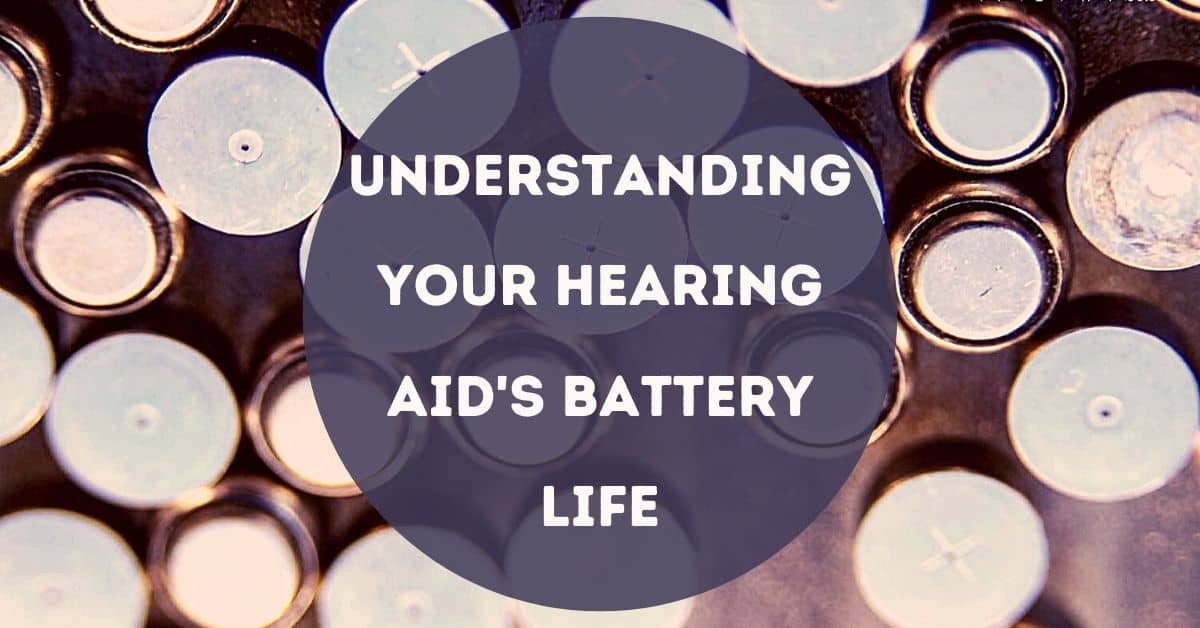- Navigating the Spectrum: Understanding Hearing Impairment Degrees - December 6, 2023
- Living with Hearing Aids in Day-to-Day Life - November 22, 2023
- A Comprehensive Guide to Hearing Aids: Exploring Styles and How They Work - November 21, 2023
All hearing aids are battery operated. Some hearing aids use disposable batteries, while others use rechargeable ones. No matter what type of battery your hearing aid utilizes, it is important to gain an understanding of your hearing aid’s battery life. This will help you to avoid the obnoxious occurrence of you being left with dead hearing aid batteries and no spare.
Disposable Hearing Aid Batteries
Disposable batteries will be purchased in packs that contain several small, round battery cells. These will need to be changed out regularly to power the hearing aid.
Disposable batteries can be bought at almost any drugstore, or through your hearing care provider. It is important to know what size of battery your hearing aid uses.
Factors that Impact Disposable Battery Life
Although zinc-air batteries have the same life, there are many other factors that will help determine how long your hearing aid batteries will last.
Wireless Streaming – Wireless streaming is a great advancement in hearing aid technology, however it also drains battery life quickly. If you use this feature often, know that your hearing aid battery life will be shorter than average.
Hearing Aid Size – The general rule is that the bigger the hearing aid, the bigger the battery, and the smaller the hearing aid, the smaller the battery. The same goes for battery life. Bigger batteries typically last longer than their smaller counterparts. This is an important consideration when choosing hearing aids because the smaller you go, the more often you will most likely need to replace the batteries.
Tip: Zinc-air batteries are powered by exposure to air. They come with a plastic tab attached to them that keep air from reaching them. This plastic tab is not to be removed until the batteries are ready to be used because once they are exposed to air, the battery begins “working” and therefore the life of the battery begins ticking. Leave the tab off of the battery for a few minutes before placing it in your hearing aid to get the most life out of it.
Battery sizes and their average lifespan:
| Size | Color | Typical Hearing Aid | Average Lifespan |
| 375 – 11.6mm x 5.4mm | Blue | BTE Power Models | 9-20 days |
| 13 – 7.9mm x 5.4mm | Orange | BTE and ITE | 6-14 days |
| 312 – 7.9mm-3.6mm | Brown | RITE and ITC | 3-10 days |
| 10 – 5.8mm-3.6mm | Yellow | Mini RITE and CIC | 3-7 days |
Rechargeable Hearing Aids
Many newer hearing aid batteries are rechargeable. These devices are docked in charging ports overnight, similar to how we charge our smartphones or laptops. The battery life on these hearing aids also vary depending on some of the above considerations, such as streaming usage, hours of use per day, and features and technology. Because these devices are charged nightly, battery life will most likely last you all day without issue.
Benefits to Rechargeable Hearing Aids
Convenience – Rechargeable hearing aids can often be more convenient, most of us are in the habit of charging our phones, watches, and other electronic devices at night. This allows the patient to use the hearing aids all day without the interruption of changing a battery.
Ease of use– unlike disposable batteries that are small and round, rechargeable hearing aids do not require a great deal of dexterity to place in their charging docs. Rechargeable batteries eliminate the need for tiny parts and pieces that the wearer has to regularly handle.
If you have questions about your hearing aid’s batteries or new rechargeable technology, feel free to reach out to our friendly team. We look forward to helping you.

